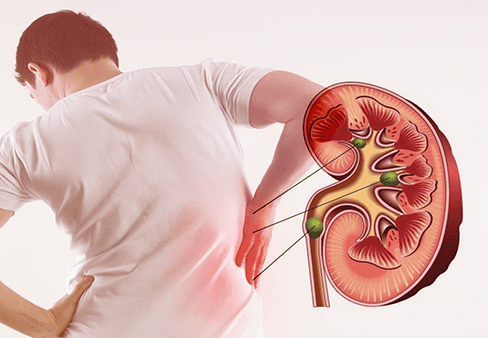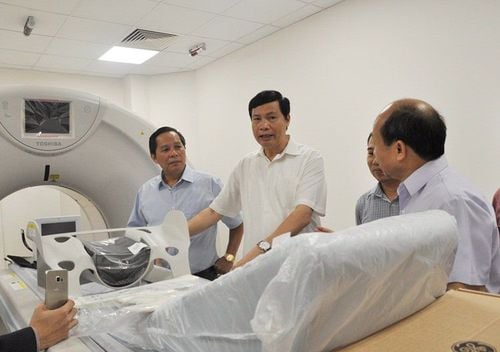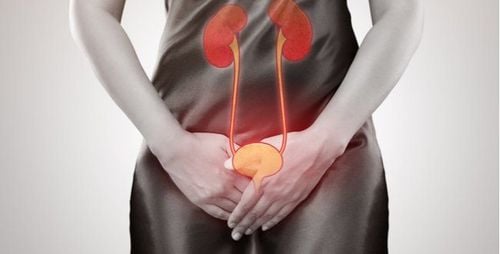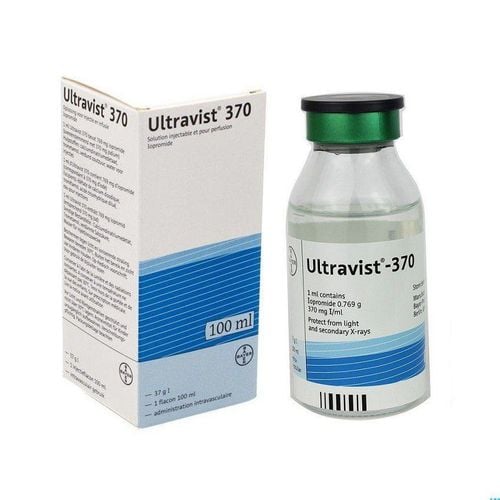This is an automatically translated article.
The article is expertly consulted by Master, Doctor Nguyen Thi Mai Anh - Doctor of Radiology - Department of Diagnostic Imaging and Nuclear Medicine - Vinmec Times City International General Hospital.Computed tomography of the urinary system with contrast injection is a technique that uses X-rays and a computerized tomography machine system to reconstruct the structure of the urinary system. The results of computed tomography of the urinary system with contrast injection allow the assessment and detection of abnormalities and pathologies of the urinary system.
1. Overview of urinary microscopy with contrast injection
Computed tomography of the urinary system with contrast injection uses a computerized tomography machine and X-rays to examine the entire urinary system from the dome of the diaphragm to the pubic joint including the ureters, kidneys, bladder, .....The cut layers formed from the kidney to the prostate gland are reconstructed in 3D space or in different planes to help doctors observe from the parenchyma, the renal pelvis to the ureter. , bladder and urinary tracts without the need for surgery.
2. Indications for computed tomography of the urinary system with contrast injection
Computed tomography of the urinary system with contrast injection is indicated in the following cases:Patient has renal colic; Urinary system stones: ureteral stones, kidney stones, bladder stones; Tumor pathology: Renal tumor, prostate tumor, urinary tract tumor,... Urinary system with congenital malformations. Trauma Inflammatory pathology, abscess Pathology in the prostate gland and seminal vesicles;

Bệnh nhân mắc sỏi thận được chỉ định chụp cắt lớp hệ tiết niệu có tiêm thuốc cản quang
3. Urinary system microscopic tomography procedure with contrast injection
The procedure of urological micro tomography with contrast injection includes the following steps:Step 1: Instruct the patient to lie supine on the examination table, arms raised above the head and hold breath according to instructions to avoid image interference . Step 2: Take pre-injection scans to locate the original lesion. Measure the density of the suspected lesion to evaluate the composition of the lesion including fat, blood, and calcification; compared with the proportion of the lesion after injection to assess the extent of drug enhancement. Step 3: Inject contrast agent at a dose of 1-2ml/kg of body weight, inject quickly, the minimum injection speed should be 3ml/s, if using an electric syringe, the injection speed should be 4-5ml/s. Using an electric syringe will help to accurately control the arterial and venous rhythms after injection. Step 4: After injection for 25 - 30 seconds, take a CT scan in the arterial phase to assess the richness of the lesion as a tumor, the ability to detect early venous drainage in the case of an arteriovenous malformation. vein, bleeding can cause kidney injury to drain the drug out of the blood vessel. Step 5: After 60-70 seconds of injection, CT scan of urinary system with cuts in venous phase to evaluate drug clearance of tumor lesions, bilateral and venous enhancement grid in the case of renal tumours, detect lesions of the rupture line or foci of contusion in the case of trauma. Step 6: Depending on each case, the lesions are slow to absorb drugs, take the CT scans 5-7 minutes later after the injection. In case of ureteral stone, ureteral tumor, renal calyces dilatation can be taken at a later time depending on the evaluation of the doctor. If additional X-ray film is required after the injection. Step 7: Recreate the image on the camera at the shooting chamber. The results of CT scan of the urinary system must clearly show the structure of the urinary system to serve the diagnosis.

Máy chụp CT 640 lát tại Vinmec
Currently, Vinmec International General Hospital is equipped with a 640-slice CT scanner TSX - 301C manufactured by Toshiba capable of supporting diagnosis on an area up to 16 cm wide, fast speed allows one rotation of the image. The whole heart can be detected, helping to optimally diagnose coronary, vascular and systemic arteries. In particular, this machine can reduce up to 90% of radiation dose, so it can be taken for pregnant women when indicated.
Master, Doctor Nguyen Thi Mai Anh has nearly 10 years of experience in the field of diagnostic imaging, especially in imaging breast and thyroid cancer. Received formal training at Thai Binh Medical University and specialized postgraduate training at Hanoi Medical University. Currently, the doctor is a radiologist at Vinmec Times City International General Hospital.
Please dial HOTLINE for more information or register for an appointment HERE. Download MyVinmec app to make appointments faster and to manage your bookings easily.













